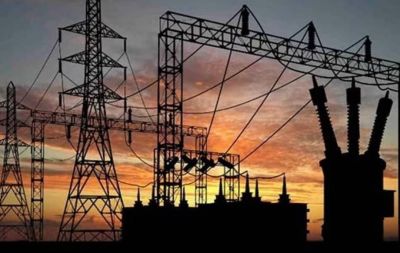Over 11.5 million electricity households and customers in Nigeria, who account for about 85 per cent of grid connected electricity, have been thrown into darkness as the electricity supply industry moves to implement at least 20-hour power supply to some customers, the Guardian has reported.
With electricity generation wobbling around 3,000 megawatts, there are indications that the Generation Companies (GenCos) may insist on a bilateral bulk trading agreement with the Distribution Companies (DisCos) to prioritise band A customers outside of the Nigerian Bulk Electricity Trading Company (NBET).
Already, most band A customers, who are expected to get at least 20 hours of power supply daily for being charged an exorbitant rate of N225 kilowatt per hour (KWh), are complaining of poor supply.
Sadly, the situation may linger as the extant challenges of the power industry are worsening the regular blame game in the sector, especially between government-owned Transmission Company of Nigeria (TCN), which holds one of the world’s worst records for grid collapse and ramping down of generators, and the DisCos.
Pegging an increase in electricity tariff on the volatility of the naira, exchange rate, gas price and inflation without having a control over availability of electricity, NERC had increased tariff for band A consumers from about N66 KWh to a flat rate of N225 KWh in an attempt to reduce government subsidy on the sector. Struggling to meet up with required hours of electricity for band A, most consumers and the larger segment of the country, who are meant to enjoy between 16 to about four hours of electricity under band B to E, have been thrown into darkness.
Recall that in 2022, NERC had introduced the Service Based Tariff (SBT) under the former administration thinking that the sector would mature into an industry where customers can at least have predictable hours of electricity from band A, which has 20 hours and above of constant supply and band E with at least four hours of constant power supply.
Seeing that the supply was a largely unrealistic yardstick in some areas, most of the feeders on band in the latest review were downgraded to band B; but still customers are raising concerns.
On one hand, the band A customers are not satisfied despite the fact that DisCos have now shifted attention to them; on the other hand, electricity supply is now worse for consumers whose tariffs are yet to be increased.
A customer in Kubwa area of Abuja, Damilola Bashirat, who is under band B, said that for over a week, she had barely enjoyed six hours of electricity daily, adding that the supply situation was better before the new tariff was introduced.
Also, in some parts of Dawaki, where electricity was very stable, the power supply has gone from better to worse.
Some customers in the Ajao Estate area of Lagos State served by Ikeja Electric, who are under band C, said the supply only comes by midnight and disappears before dawn. These customers are supposed to get a minimum of 12 hours of electricity per day.
In Utako area of Abuja, where customers are under band B, a small business owner, Rauf Hassan, said the Abuja Electricity Distribution Company (AEDC) barely provides six hours of constant electricity supply.
Former President of the Chartered Institute of Bankers of Nigeria (CIBN), Segun Ajibola, said the complaints were growing from electricity consumers, adding that the plight of those claimed to be on band A is more pathetic.
Ajibola, who is a Professor of Economics at Babcock University, said: “Lekki Phase 1, Lagos, is on band A. On the average, some of the areas enjoy supply of electricity for about six hours daily since April 1. Yet the consumers are subjected to the nerve cracking tariffs just introduced,” Ajibola said.
He noted that the electricity value chain is overdue for total overhaul, adding that categorisation into bands A to E is a mere distraction away from the real problems.
According to him, the GenCos, the TCN, the DisCos and their regulators need to go back to the drawing board.
The economist noted that unless and until the sector develops the capacity to generate, transmit and distribute electricity to both households and businesses in the country, it would continue to be ‘motion without movement’.
“Raising tariffs for whichever band or for all bands is mere divisive tactics and may not stand the test of time. I strongly believe that it is a way of hitting hard the soft targets represented by the helpless and hapless Nigerian consumers.
“If some less endowed African countries with about a quarter of Nigeria’s population can generate 10 to 20 thousand megawatts, I hasten to ask, what exactly is the problem with the managers of Nigeria’s power sector?” Ajibola queried.
President of Nigerian Economic Society (NES), Adeola Adenikinju, said it was obvious that the DisCos do not have enough power to distribute to customers. He noted that with the higher tariff rate, band A consumers are likely to be more negatively impacted, except there is an overall improvement on electricity generation.
“DisCos should not be allowed to implement any tariff increase until they are ready to meet the number of hours required under each tariff band.
“Overall, the current band category should be transitional. It is also discriminatory. Every customer should be entitled to stable, reliable, affordable and constant electricity supply,” Adenikinju said.
Energy scholar, Wunmi Iledare, noted that Nigeria must come to terms with the fact that N68 per KWh is significantly below the market clearing price of electricity.
“In fact, N68 is also not anywhere close to the fair return price of an economic good with decreasing marginal cost and average cost curve like electricity powered majorly by thermal plants.
“The social optimum price of electricity is also not N68 either. So, NERC had to do something long before now but for political expediency. So, it is better late than never,” he said.
Iledare stated that the accuracy of the band A tariff is, however, conjectural because of the many unknowns.
He noted that as more facts become available, the pricing model is expected to be recalibrated in a self adjusting manner, stressing that some customers badly affected because of affordability and metering issues would be resolved to protect consumer surplus.
“If what I am reading in the media is correct, there is a price discrimination application based on daily supply hours for selected users. Such a mechanism is not unusual in the power market. We have it also in the airline industry. But looking at everything done so far, the presidential Executive Order 40, the increase in wellhead natural gas price by the Nigeria Petroleum Authority, and this discriminatory electricity tariff by NERC; the benefits seemed skewed to optimise producer surplus than consumer surplus,” he said.
Iledare expressed worries about the implementation plan of the tariff bands, saying there appears to be no penalty attached to the delimitation to supply 20+ hours of quality electron delivery services to customers.
Energy lawyer, Madaki Ameh, said the band categories are illegal and a justification for the inefficiencies of the power sector.
“Every consumer of electricity in Nigeria is entitled to regular power supply like others. Creating different bands serves as justification for denying those on lower bands of regular power supply, in a bid to blackmail them, as if the amount they pay is too small for them to expect any regular supply, thereby unfairly justifying the laziness and inability to perform on the part of the DisCos,” Ameh said.
He called for the immediate scrapping of the ‘artificial’ bands, adding that there is a need to expand the consumer base to reduce the unit cost and also get the GenCos to increase power generation from the paltry average output of 3,000 MW, which the country has experienced for decades.
Electricity market analyst, Lanre Elatuyi, said the infrastructure at the distribution end cannot support the reliability that would ensure the service level agreements under each band.
Elatuyi also called for a comprehensive study by all DisCos to ascertain the average load for all classes of customers and see if total allocated loads would be enough or there is a need to procure more capacity.
“Take for instance the 613MW allocated to AEDC; this assumes a flat load profile and AEDC will not be able to meet load demands during peak hours when real time demand rises to say 700MW and there is no extra procured capacity.
“The fact is that there are constraints in the distribution networks and there is a need for the regulator to carry out a study on the networks to ascertain what is possible to avoid customers being shortchanged,” Elatuyi said.
A stakeholder in the power sector, Bode Fadipe, said the prevailing situation in the supply to bands B – E remains a source of worry because it is only tariff adjustment that has taken place and not load increase for Band A end users.
To have a situation where other end users in other bands are complaining, according to him, could mean that affected DisCos have opted to concentrate all their resources on band A end users.
“If that is the case, it is against the spirit and letter of the tariff adjustment. They (DisCos) owe customers in the other bands as much responsibility as they do to their prime customers.
“But let it also be said that this is not unexpected. The resources to meet the service level commitment whether it is a technologically or a manually driven sector is huge,” he said



